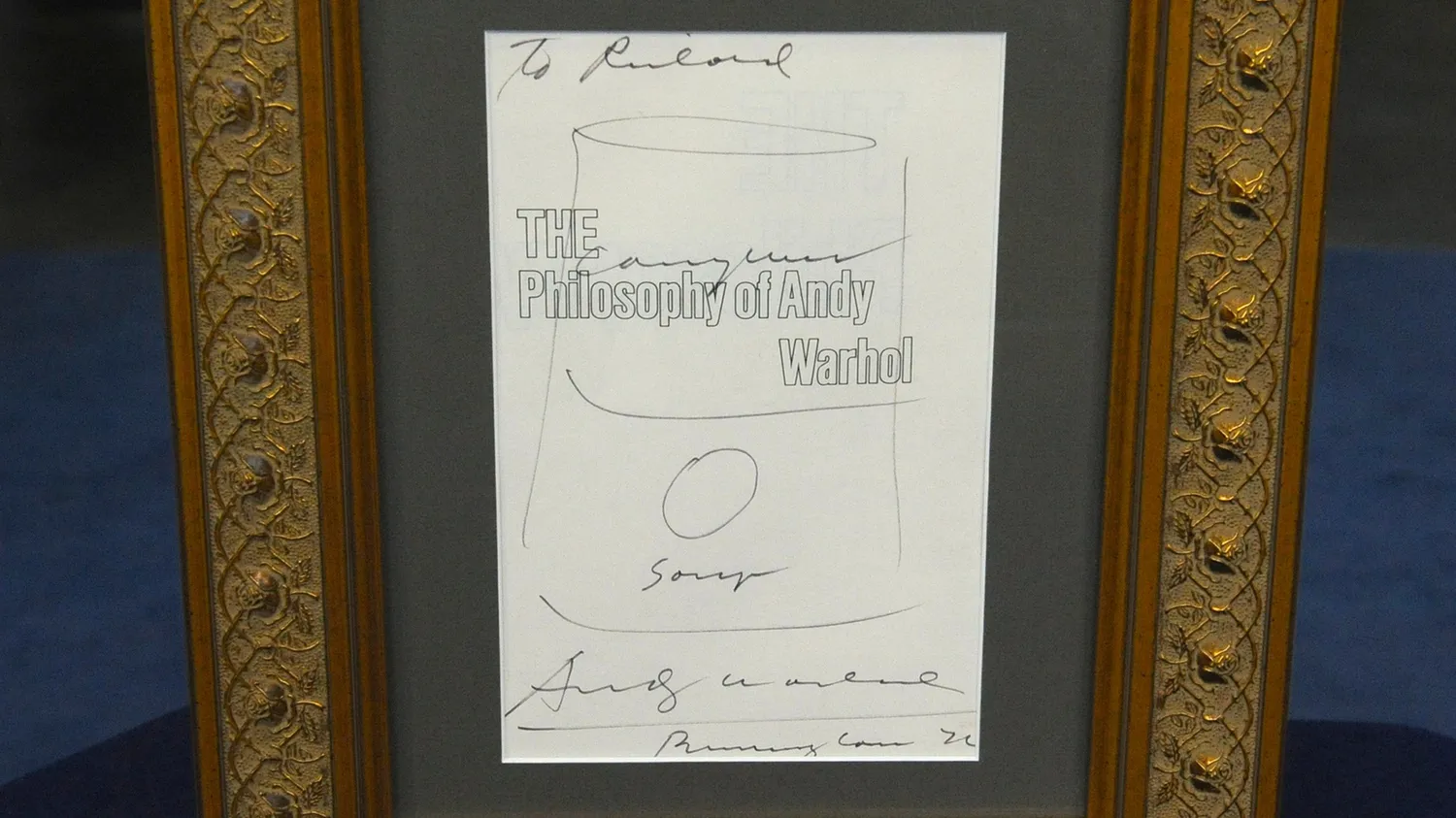GUEST: In 1970, my dad decided to watch a football game with my brother, and my mom and I took a little drive into the country with a relative, and we went to New Hope, Pennsylvania. She'd heard about a woodworker, George Nakashima. So we went to his workshop, met him, and took a look at some of the furniture. Within a couple of months, they decided they wanted a bench made and communicated with him, and he sent a drawing to us of what that bench would look like, and here it is.
APPRAISER: It's extraordinary that you have this drawing by George Nakashima, truly a master American craftsman. You met him in person?
GUEST: We did, we did.
APPRAISER: What was he like?
GUEST: It was pretty exciting. You know, I was 12 years old, and I just don't remember that much, I'm so sorry.
APPRAISER: Well, I can maybe fill in a little bit of the blanks, because my brother went to school in the New Hope area.
GUEST: Really?
APPRAISER: And while he was driving around in his pickup truck, he met George, and George said to these bunch of teenagers, "If you guys," you know, "if you're driving around the countryside "and you see any big trees fallen down, call me first." (laughs)
GUEST: Really?
APPRAISER: Because, of course, he knew these kids were carousing in their pickup trucks at night. I've seen furniture by George Nakashima, and the drawings, You notice along the top of it, it says, "Please confirm if satisfactory."
GUEST: (laughs) I know-- I thought that was really special.
APPRAISER: He lays it out for you. He's even chosen the piece of wood, and in his studio, he had planks and planks of wood that...
GUEST: I do remember that.
APPRAISER: Do you?
GUEST: Yes, I do.
APPRAISER: Well, he was in love with wood. And the thing that fascinates me about him, this great master of mid-century furniture, is that a lot of his contemporaries were making material in more a manufactured way, and he loved the hand process. And so he chose these pieces so carefully, and you can really see that. I mean, it comes to life in this drawing, where he talks about the textured knot. And, of course, the textured knot is right here in front of us. I mean, there's just no mistake that this drawing goes to this bench. It's just this combination-- of course, he's a Japanese American, born in Washington-- but this combination of Americana and also Japanese sensibilities. The top of this bench looks to me like a torii arch from Japan, coming into a Shinto temple.
GUEST: It does.
APPRAISER: And when George came to the New Hope, Pennsylvania, area in the '40s, he looked at Americana and looked at Windsor benches. So this is this 18th-century Windsor bench brought into a 20th-century sensibility. A lot of his furniture was done in a walnut. There was a lot of walnut in the Pennsylvania area. He also uses imported woods, as well, but, but this is a cherry, and probably indigenous. And then these stiles are hickory. Any idea of its value?
GUEST: We had it valued by the Nakashima Group in early 2000, and it was, I think, around $6,000. But I'd love to get an update on that, because I'd really like to have it insured.
APPRAISER: Well, your parents paid $375 for this?
GUEST: Yes.
APPRAISER: The market has exploded in Nakashima furniture. Benches like this at auction are selling for $40,000.
GUEST: Oh, my God.
APPRAISER: Now, because you have the drawing, you get to add a few thousand more on top of that. So say we're at the $45,000 mark. For insurance, you might want to raise it higher. But this is, I'd say $45,000.
GUEST: Oh, my God.
APPRAISER: It's just red-hot now in the marketplace.
GUEST: Well, we love it, and we use it every day in the living room, so we take very good care of it.











